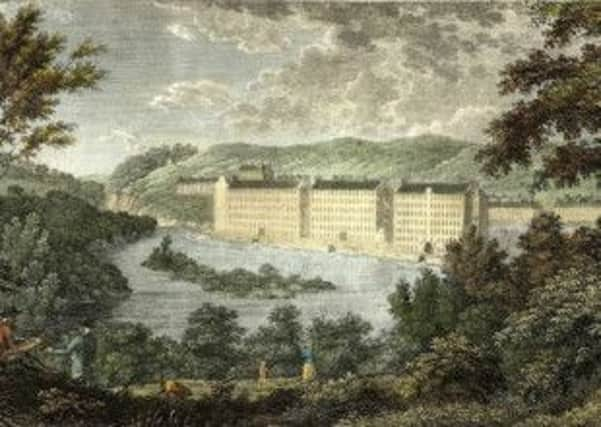Book review: A Higher World - Scotland 1707-1815


A Higher World: Scotland 1707-1815
by Michael Fry
Birlinn, 418pp, £25
As in A New Race of Men, the companion volume to this published last year, Michael Fry is keen to emphasise what he believes to be his distinctive approach to history. What he calls the socio-economic approach to the subject has led, he claims, to a concentration on the ways Scotland has become assimilated into the UK. The differences, he argues, have been less well treated, and he sets out to correct this “bias” by paying attention to political and cultural history. Although assimilation happened in those areas too, Fry’s nationalist-friendly thesis – that it was never complete – is a strong, even if hardly original given, for example, that the Union of 1707 was never the “entire” union some wanted it to be.
Whatever approach is adopted, if it’s to be top-drawer history, it needs to be thorough. What disappoints about this book is the lack – in parts – of rigour. It’s certainly not a text that could be easily recommended as a model for undergraduate students. To cover this period in a comprehensive manner is an immense task and Fry is to be commended for trying. But there is now a vast literature that would take years to read and digest. Too often Fry seems oblivious to this, preferring – by and large – to rely on older work rather than more recent findings and interpretations. Key books and papers have passed him by. The result is that he gets things wrong, or seems out of step with current understanding. Further colouring Fry’s assessments are his own ideological biases – which include a fondness for the Jacobites, conviction about the virtues of the free market, and a ranting contempt for “the dominant post-Marxist school of Scottish historians” and their “quest” for the origins of proletarian consciousness.
Advertisement
Hide AdThis last is a caricature, and dated: historians of the “people below” range much more widely in their interests and know much more about the everyday life of ordinary Scots than Fry (who seems unfamiliar with their findings) deems possible. Ironically, given his disdain for the concept of proletarianisation, Fry unwittingly applies it when lauding John Millar’s proposals to break the strikes by which Scottish collier serfs managed to become some of Scotland’s best-paid workers.
Fry is reluctant to acknowledge the economic benefits of the Union. Yet within the text are numerous examples of Union-facilitated success. He only grudgingly accepts that the rise of the linen industry – crucial to Scotland’s emergence as an industrious nation – can be traced precisely to the role played by state agencies and Robert Walpole’s acceptance that if Scotland was to be pacified, the British state would have to intervene in stimulating economic activity. Cheap labour – Fry’s preferred explanation – was hardly unique to Scotland. Similar anti-Union sentiment may lie behind his assertion that Scotland’s coal industry suffered a “setback” in 1707. Hardly. Scottish coal mining was protected from English competition from 1707 to 1793 by being relieved of coal duties payable on English coal shipments.
In his chapter on Order, Fry stresses the relative peacefulness of Scottish society both in town and country after the Jacobite era. This is reasonable enough, although mysteriously he manages to avoid making any but passing references to food rioting – the major challenge for the authorities in Scotland’s rapidly growing burghs and an example if not of class solidarity, at least of community-based moral outrage among wage earners. And contrary to Fry’s claim that the medieval system of regulation – castigated by Adam Smith – lasted well into the nineteenth century, the fact is that in 1801, expressly to ease the free movement of victual, a ruling by Lord Meadowbank (informed by Smith’s writings) ended the centuries-old practice which allowed burgh authorities to seize grain from merchants for the use of their own inhabitants. Food riots became rare. More a matter of contested interpretation is Fry’s confident declaration that at the time of the first major Jacobite rising in 1715 Scotland was “a nation split between nationalist and unionists”. Yes, to a degree. But the division was as much about political and religious values, that is on the one hand the Glorious Revolution-led constitutional monarchy of the Protestant House of Hanover and on the other the absolutism and belief in divine right of the Stewarts, who were also Roman Catholic, anathema to Scotland’s Presbyterians.
Footnoting too is sloppy at times, another sign perhaps of undue haste. In themselves such slips are of little consequence, but when key dates are wrong – Glasgow’s Chamber of Commerce, Britain’s first (and therefore important to Fry’s argument), was founded in 1783, not 1793 – it is a more serious matter.
But whatever its flaws, this is an immensely enjoyable book. Many of its 15 chapters open with an instructive cameo. The lynching of Edinburgh’s Captain Porteous in September 1736 is an oft-told tale, but Fry’s account of the manner of his death has the power to chill. In chapter nine, Gaeldom: “Under the Foot of Strangers”, Fry writes passionately about Gaelic verse of the ’45 as collected by the late John Lorne Campbell. The Enlightenment too – Fry’s enthusiasm – is treated in a way that is accessible to the non-specialist.
In short, an ambitious and well-produced volume, but to be read with care.